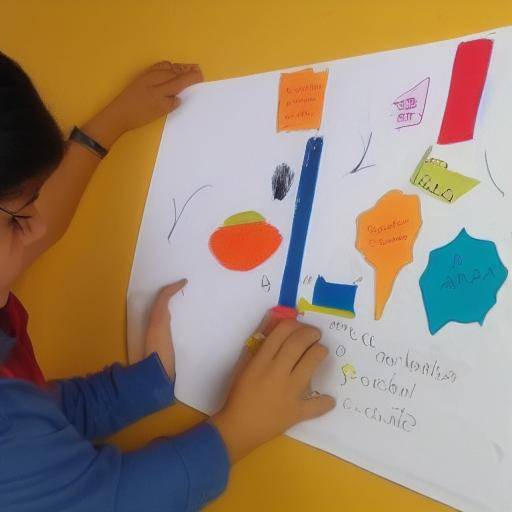
Project-based learning (ABP) is an educational methodology that has become increasingly relevant in the academic and professional fields in recent years. By integrating ABP into problem solving, critical thinking, creativity is encouraged, and students are given a more immersive learning experience. In this article, we will explore in depth the role of project-based learning in problem solving, from its historical origin to its relevance today. In addition, we will address how this approach is applied in various situations, provide practical advice and discuss future trends in this area.
History and Background
Project-based learning is rooted in the progressive educational theories of the 20th century, which advocated a more student-centered approach aimed at solving real-world problems. As education evolved, more structured approaches and systematized methodologies emerged that integrated projects as a central part of the teaching-learning process.
The influence of thinkers such as John Dewey and Jean Piaget was fundamental in the development of ABP, as their ideas on active learning and knowledge building gave rise to this methodology. Over the decades, ABP has experienced multiple adaptations and refinements, integrating progress in cognitive psychology, educational technology and active pedagogy.
The ABP has not only impacted the educational environment, but has also found applications in problem solving within professional contexts, promoting innovation and developing practical skills.
Deep analysis
Project-based learning offers many benefits for both students and professionals. In the field of education, it promotes intrinsic motivation, autonomy and the acquisition of transversal skills, such as teamwork and effective communication. In addressing real problems, participants develop skills for everyday life and the world of work.
However, the successful implementation of the ABP also poses challenges, such as the need for careful planning, the efficient management of time and resources, as well as the fair and meaningful evaluation of learning.
Current trends in ABP are directed towards the integration of technology as a facilitative tool, the promotion of interdisciplinaryity and the approach in solving complex problems that transcend traditional boundaries of knowledge.
Integral Examination
Project-based learning has been successfully applied in a variety of contexts, from school classrooms to business environments. The flexibility of this methodology allows you to adapt to different needs and situations, making it a powerful tool to address challenges and promote personal and professional growth.
Education experts and business leaders recognize the value of ABP, highlighting its ability to stimulate innovation, strengthen problem solving and prepare individuals to face the challenges of a constantly changing world.
Choosing specific approaches within the ABP can influence the results obtained, making it essential to consider best practices and lessons learned from previous experiences when implementing learning projects.
Comparative analysis
By comparing the role of project-based learning with other traditional educational methodologies, there is a clear difference in the relevance and applicability of acquired knowledge. While conventional approaches tend to focus on memorization and reproduction of information, ABP emphasizes deep understanding, practical application and generation of original solutions.
In the area of problem solving, the ABP emphasizes its holistic approach, which integrates multiple dimensions of critical thinking and creativity, allowing participants to address complex situations from different perspectives and disciplines.
Practical Tips and Accessible Advice
In implementing project-based learning for problem resolution, it is crucial to establish clear objectives, involve participants in identifying and defining the challenges to be addressed, and to provide a structured framework that encourages collaboration and reflection.
Some practical tips include the use of digital tools for project management, the allocation of clear roles and responsibilities, as well as constant feedback to assess progress and promote continuous learning.
Industrial Perspectives and Expert Reviews
From the perspective of creative industries, project-based learning has been consolidated as an effective approach to developing relevant skills in fields such as design, architecture, engineering and technological innovation. The ability of individuals to raise significant questions, collaborate in finding solutions and effectively communicate their ideas is enhanced through the ABP.
Education experts highlight the importance of integrating project-based learning into academic programs to foster creativity, leadership and adaptive capacity in students, preparing them to address future challenges in an increasingly interconnected and changing world.
Case Studies and Practical Applications
The impact of project-based learning is evidenced by numerous success stories in various areas, such as the resolution of environmental challenges, the improvement of business processes and the creation of innovative health solutions. These cases demonstrate the effectiveness of ABP in generating significant and sustainable changes in society.
When analyzing specific ABP applications, it is possible to identify common patterns and lessons that can be transferred to different contexts, promoting the diffusion of good practices and the generation of long-term positive impact.
Future Trends and Predictions
The role of project-based learning in problem solving is seen as fundamental in the context of digital transformation, globalization and the growing demand for skills not only technical but also socio-emotional. The ability of individuals to work collaboratively, confront uncertainty and address complex challenges will be crucial in the future's work scenario.
ABP is expected to continue to evolve to adapt to the changing needs of society, integrating advanced simulation tools, increased reality and data analysis to deliver even more immersive and meaningful learning experiences.
Conclusions
In short, the role of project-based learning in problem solving is critical to promoting an active, relevant and meaningful learning approach. Through the ABP, the development of skills that go beyond mere knowledge acquisition is encouraged, preparing individuals to face current and future challenges effectively and creatively.
Frequently asked questions
How can we integrate project-based learning into formal educational settings?
The integration of ABP into formal educational environments requires careful review of curricula, teacher training and the establishment of adequate resources to support effective implementation.
What are the main differences between ABP and traditional educational approaches?
Unlike traditional educational approaches focused on knowledge transmission, ABP focuses on the practical and meaningful application of learning, promoting the development of complex skills and solving real problems.
What impact does project-based learning have on the development of socio-emotional skills?
ABP strengthens socio-emotional skills such as collaboration, effective communication and time management, allowing participants to work in teams in a collaborative manner, confront challenges and handle pressure effectively.
What is the role of ABP in professional training and job skills development?
Project-based learning plays a crucial role in professional training by providing authentic experiences that reflect the challenges of the real working world, preparing individuals to face complex situations and promoting the acquisition of practical and relevant skills.
To what extent can ABP help organizations solve problems more effectively?
ABP can help organizations solve problems more effectively by fostering a systematic approach, boosting creativity and innovation, and promoting critical thinking that addresses challenges in a holistic manner.
What are the main future trends in project-based learning?
The ABP is expected to increasingly integrate advanced technologies, promote interdisciplinaryity and adapt to the changing demands of the working environment, focusing on the development of key skills for the twenty-first century.
In conclusion, project-based learning plays a key role in problem solving, both in educational and professional settings. Its innovative, student-centred approach to the practical application of knowledge makes it a valuable tool to develop relevant and effective skills to meet current and future challenges.






















































